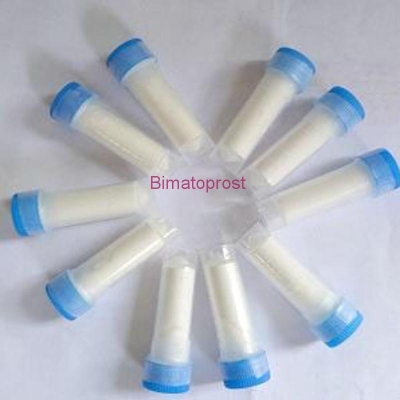-
Categories
-
Pharmaceutical Intermediates
-
Active Pharmaceutical Ingredients
-
Food Additives
- Industrial Coatings
- Agrochemicals
- Dyes and Pigments
- Surfactant
- Flavors and Fragrances
- Chemical Reagents
- Catalyst and Auxiliary
- Natural Products
- Inorganic Chemistry
-
Organic Chemistry
-
Biochemical Engineering
- Analytical Chemistry
- Cosmetic Ingredient
-
Pharmaceutical Intermediates
Promotion
ECHEMI Mall
Wholesale
Weekly Price
Exhibition
News
-
Trade Service
*Only for medical professionals to read the reference table to understand! Introduction The thyroid is an important endocrine gland in the human body, which is mainly responsible for the synthesis, storage and release of thyroxine
.
Whether the thyroid function is normal or not directly affects the metabolism and normal development of the human body, and in severe cases affects the development of the human skeletal system and nervous system
.
The most common thyroid function test items in clinical inspection work are "five thyroid function items", which mainly include total triiodothyronine (TT3), serum total thyroxine (TT4), serum free triiodothyronine ( FT3), free thyroxine (FT4), thyroid stimulating hormone (TSH)
.
The clinical significance of the five common combined test results of thyroid function is summarized as follows for your reference
.
The clinical significance of each of the five thyroid function items▌ TT3TT3 is one of the preferred indicators for judging hyperthyroidism, and it is the most sensitive indicator for diagnosing hyperthyroidism
.
In hyperthyroidism, the increase of serum TT3 usually occurs earlier than the increase of TT4, and it is more sensitive to the diagnosis of mild hyperthyroidism, early hyperthyroidism and recurrence of hyperthyroidism after treatment
.
Increased TT3 is more common in hyperthyroidism (such as idiopathic T3 hyperthyroidism, neonatal transient hyperthyroidism, subacute thyroiditis, increased TBG, increased albumin, taking exogenous T3, etc.
); decreased TT3 is more common in primary Hypothyroidism (such as cretinism, congenital abnormal thyroid formation, neonatal hypothyroidism, idiopathic myxedema, etc.
), secondary hypothyroidism (such as hypopituitarism, TSH alone deficiency, etc.
), Hypothalamic dysfunction, congenital TBG reduction,
etc.
▌ TT4TT4 is the most basic in vitro screening index for judging thyroid function status
.
In hypothyroidism, the decrease of TT4 is usually more obvious, so TT4 plays a key role in the diagnosis of hypothyroidism
.
TT4 is often affected by thyroid-binding globulin content, and high levels of thyroid-binding globulin can increase total T4
.
Increased TT4 is more common in hyperthyroidism, TSH-secreting tumors, overuse of thyroid hormones, primary biliary cirrhosis, malignancy, increased thyroid-binding globulin, and increased prealbuminemia.
It can also be seen in severe infections, cardiac insufficiency, Liver disease, kidney disease,
etc.
Decreased TT4 seen in hypothyroidism, idiopathic myxedema, hypothyroidism, chronic lymphocytic thyroiditis, Hashimoto's disease, decreased thyroid-binding globulin, low T3, T4 syndrome, secondary (pituitary) Hypothyroidism, subthyroiditis or painless thyroiditis recovery period; in addition, during the treatment of hyperthyroidism, diabetic ketoacidosis, malignant tumor, heart failure, etc.
can also reduce TT4
.
▌ FT3, FT4 FT3 and FT4 are the physiologically active forms of TT3 and TT4, respectively, and are not affected by plasma thyroglobulin.
Direct measurement of FT3 and FT4 is more meaningful for understanding the state of thyroid function
.
FT3 has good sensitivity in diagnosing hyperthyroidism, but poor sensitivity and specificity in diagnosing hypothyroidism (the body can maintain normal FT3 concentration by increasing the conversion of T4 to T3)
.
FT4 is a good indicator for the diagnosis of hypothyroidism
.
▌ TSHTSH is the most important indicator for diagnosing primary and secondary thyroid dysfunction, the most sensitive indicator for screening subclinical thyroid dysfunction, and the best indicator for prenatal diagnosis of congenital hypothyroidism.
Evaluate the therapeutic effect of thyroid dysfunction and guide medication
.
Increased TSH: Indicates hypothyroidism
.
Commonly seen in primary hypothyroidism, ectopic TSH secretion syndrome, simple goiter, hyperthyroidism, thyroiditis,
etc.
Decreased TSH: common in hyperthyroidism, hypothalamic hypothyroidism, hypopituitarism, hypercortisolism, etc.
, and can also be seen in excessive application of glucocorticoids
.
The five common combination patterns and meanings of thyroid function (as shown in Table 1) Note in Table 1: The above does not take into account the patient's other diseases (rheumatoid, SLE and other autoimmune diseases), heterophile antibodies, rheumatoid factors, drugs, Specimen collection, transportation, reagents, instruments and testing process are affected by abnormal factors on test results
.







